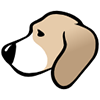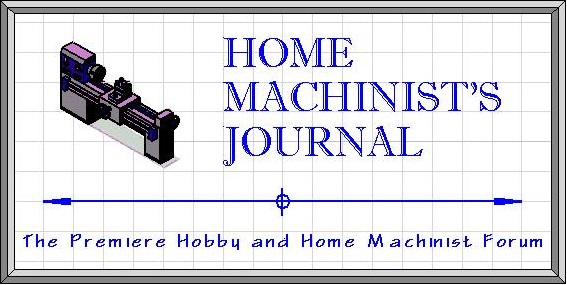- Welcome to Home Machinist's Journal.
-
 3D Printed cartridge holder...
by 4GSR
3D Printed cartridge holder...
by 4GSR
[Dec 08, 2025, 06:30 AM] -
 Sources for CAD software
by propforward
Sources for CAD software
by propforward
[Dec 01, 2025, 12:28 PM] -
 Retirement
by PJ
Retirement
by PJ
[Nov 25, 2025, 12:44 PM] -
 Large model steam engine designed...
by TerryWerm
Large model steam engine designed...
by TerryWerm
[Nov 23, 2025, 09:32 PM] -
 Black Hills Model Engineering...
by TerryWerm
Black Hills Model Engineering...
by TerryWerm
[Oct 04, 2025, 05:24 PM] -
 Just What I Didn’t Need #8...
by TerryWerm
Just What I Didn’t Need #8...
by TerryWerm
[Aug 23, 2025, 08:48 AM] -
 Yes, You Can Knurl Delrin
by 4GSR
Yes, You Can Knurl Delrin
by 4GSR
[Aug 19, 2025, 12:18 PM] -
 Another Hey Man project
by TerryWerm
Another Hey Man project
by TerryWerm
[Aug 16, 2025, 06:23 PM] -
 Projects that cause projects...
by TerryWerm
Projects that cause projects...
by TerryWerm
[Aug 05, 2025, 10:31 PM] -
 Jury duty today
by 4GSR
Jury duty today
by 4GSR
[Jul 19, 2025, 11:15 AM]
Members
- Total Members: 48
- Latest: JamesTix
Stats
- Total Posts: 1,403
- Total Topics: 283
- Online today: 8
- Online ever: 91 (Apr 13, 2025, 11:11 PM)
Users Online
- Users: 1
- Guests: 5
- Total: 6
- TerryWerm
5 Guests, 1 User
TerryWerm
TerryWerm
Recent posts
#71
Welcome Center / Another dive into the (for mr,...
Last post by flash - May 23, 2025, 01:20 AM
South-Central Pennslvania, home to me for these many years.
I hardly remember when metal began to be an interest,I guess in the late 1940's (after the war) when my dad set up HIS Dads forge to make stuff and to educate my brother and I. By the time I was10,he had taught me how to make hinges for the barn doors and we mounted my first pair.
Lotta other stuff between then and now - along the way, I got welder certs,(MIG, stick,flux core all pos, all thickness) bought an Atlas/Craftsman to make parts for a home-built aircraft which I never finished.
My last real metal job was with a family owned foundry business which grew to multinational size, where I was "Tool& Gage Supervisor" which was just a fancy name for responsibility for about 10,000 pieces of measuring eqpt and for finding, buying, setting up and writing the programming for two CMM's.
Retired from all that in 2002, and have NOT looked back. Hardly have turned on the little lathe that now sits forlornly in my overly-cluttered garage/shop.
At 87 now, there are a few little projects that still call my name, mostly some gunsmithing things.
But I'm here to learn, no end of that. Thanks for the opportunity to join you folks and fill in what I need for what's left.
#72
General Shop Discussions / Had Some Time In My Hobby Shop
Last post by chips and more - May 20, 2025, 02:35 PMMade a few parts for one of my small metal lathes. The tabs/ears on the thick looking washers was gold soldered in place. If I suspect a problem with the hard solder flowing correctly, I will use gold solder instead of silver solder. It could be just me, but I get better results with how gold solder flows/wicks.
You cannot view this attachment.
You cannot view this attachment.
#73
General Shop Discussions / Re: Just What I Didn’t Need #6
Last post by PJ - May 19, 2025, 09:07 AMFor ten bucks that's a nice score! Looking at yours I think we have twins.. and both missing the round plate. LOL
Forget where I got mine but it lives on top of the 10 ton hydraulic one to do quick little jobs that don't require fussing.
Forget where I got mine but it lives on top of the 10 ton hydraulic one to do quick little jobs that don't require fussing.
#74
General Shop Discussions / Re: Just What I Didn’t Need #6
Last post by TerryWerm - May 18, 2025, 10:19 PMYup. A 4" disc of mild steel, 1.5" thick will run you about $30 give or take. Far more expensive than the arbor press!
#75
General Shop Discussions / Just What I Didn’t Need #6
Last post by chips and more - May 18, 2025, 06:39 PMGot this Dake arbor press today for 10 bucks. Needs a bath and a daisy wheel. Guess I could use it for smashing something LOL. And I bet you buying a 4" steel disc to make the daisy wheel will cost more than what I paid for the press!
You cannot view this attachment.
You cannot view this attachment.
#76
Chatterbox / Re: Bittersweet Sunday
Last post by PJ - May 12, 2025, 10:10 AMSorry for you and your families loss Terry. I'm not on here often and just saw your post. Dogs are such beautiful loyal creatures they steal our hearts and bring us joy. The pictures of her are beautiful. I can see her spirit.
#77
Welcome Center / Re: Hello from Almonte, Ontari...
Last post by TerryWerm - May 10, 2025, 10:04 AMWelcome aboard Brino! Great to see you here! We're not always the most active as forums go, but in some ways it is nice to have a little quiet in between periods of activity and discussion.
#78
Welcome Center / Re: Hello from Almonte, Ontari...
Last post by 4GSR - May 09, 2025, 11:09 PMWelcome back Brino.
#79
Welcome Center / Hello from Almonte, Ontario, C...
Last post by brino - May 09, 2025, 09:46 PMHello everyone!
I am a weekend machinist and DIY'er.
Machining, welding, electrical, plumbing, automotive, I tackle it all with enthusiasm and grit that I know what I am doing!
Then often do it again to get it right.
Brian
I am a weekend machinist and DIY'er.
Machining, welding, electrical, plumbing, automotive, I tackle it all with enthusiasm and grit that I know what I am doing!
Then often do it again to get it right.
Brian
#80
Chatterbox / Re: Bittersweet Sunday
Last post by brino - May 09, 2025, 08:46 PMHi Terry,
I just joined the site today so just found out today.
I am so sorry.
Brian
I just joined the site today so just found out today.
I am so sorry.
Brian




